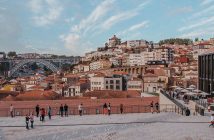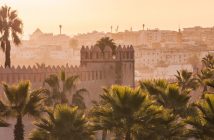It’s the sort of question at which you’d be caught out with an impulsive answer. You think you’d know the capital of Switzerland. Zurich, obviously. No? Geneva, then? Oddly, not. It’s Bern. Bern is the administrative capital of this small, enigmatic and somewhat capricious nation state.
I have long held a desire to visit Bern. My interest was piqued on a trip through the country with ex-pat and expert on all things Swiss, Diccon Bewes, whose books provide a delightful and definitive insight into the country, its people and history. A Bern resident himself, it was over coffee post-meal one evening when he told me of three facts of Bern that made it immediately appealing. The city is known for its bears, hence the name, and these bears, the symbol of the city, live on the banks of the river around its medieval centre. A river in which people commute to work, drifting downstream, their clothes in waterproof bags, before climbing out at their designated stop. On the strength of experiencing those things alone, who wouldn’t want to visit such a place?

The trouble is, it’s almost impossible to get there. Unless you travel by train from one of the other, ahem, ‘capitals’, a flight to Bern harks back to the 1950s, if the poster would have us believe, from that gateway to the Swiss capital: Southend. That’s right, Southend, Essex. It has an airport. It may not have any passengers (I tried to make a tea order at the cafe last as long as I could to alleviate the cashier’s boredom), seemed a little short on planes, and with only one flight a day it seemed an odd claim to be the conduit to Bern, but it is.
The airport may not be what we’re used to but the flight, however, is worth a mention. I am one of six passengers in a 31-seat propellor-led Fairchild Dornier 328, courtesy of Swiss charter company, Skywork. One flight and a propellor-led aircraft? Not what I’d expect to a country’s capital. But the flights cater for demand and Bern airport can’t get any bigger – the mountains don’t give the runway room for larger planes, let alone the opportunity for expansion. And this is the third of Diccon’s facts about the city that made it oddly appealing. Thus a visit to Bern, a compact medieval city, begins with a journey to match. In an age of mass market, budget BOGOFs, queues and crowds, this, folks, is the way to do it. If you don’t mind being buffeted like a puppy in a tumble dryer.
Where Zurich is synonymous with world finance and Geneva with world peace, Bern is something of an anachronism. For a medieval town, it doesn’t look very medieval. But, as with most things Swiss, it’s the product of their ingenuity. Constantly prone to fire, the worst in 1405, the ever-innovative Swiss decided on sandstone for their housing, building three and four-storey terraces and continuous arcades to ward off the rain, such that the centre feels more fin de siecle Paris than medieval Switzerland. Unsurprisingly, the whole town centre is a UNESCO World Heritage Site and its compactness, wrapped ribbon-like by the Aare, makes a weekend the perfect window to pop over to Switzerland for a couple of nights.

For the population, there is a disproportionate number of deluxe five star hotels in Bern. Two, in fact. The Bellevue Palace, grand and opulent as its name suggests, striding amid the city’s parliamentary buildings, it represents its Belle Epoque. It is classic with a capital C. The hallways could accommodate a bus, it’s all glittering chandeliers and marble columns, with a huge ornate stained glass atrium in the lounge; it is, true to form, palatial. It accommodates not one but two ballrooms, rendered in beautiful stucco, and is, unsurprisingly, the host of state dinners (the Queen and Nelson Mandela have dined at the hands of Executive Chef, Gregor Zimmerman) as well as countless glitterati through the ages – many of whom (Disney, Chaplin, Churchill and Castro among them) are showcased in silver frames on a behemoth of a sideboard in the lounge.
At the other end of the spectrum, the Schweizerhof could fit its whole self into the Bellevue’s ballrooms. A CHF50m refurbishment in 2011 has brought its 99 cosy rooms into the epitome of contemporary taste. Intimate in every sense, it oozes 21st century chic. The bustling wraparound lobby-lounge-bar is presided over by the country’s winning Barkeeper of the Year, and it has shipped over one of Japan’s most revered sushi chefs for its Fugu bar. It’s not all chrome and mirrors, however, but delightfully idiosyncratic. Like the Paul Klee paintings that hang on the walls, amid the modernity sits the traditional; the original elevator interior remains (it’s listed) and Jack’s Brasserie, with its deco booths and ‘30s ambience, remains a draw for the city’s luncheoning classes.

It transpired that Bern has more quirks than I was led to believe. The toilets in Jack’s Brasserie notwithstanding (they’re worth the visit alone), I was reminded constantly of the presence of one ‘Sophie’. A meteorological phenomenon, noted by farmers for centuries, Sophie is a name given to the third unseasonably warm day in May. And, in Bern, everyone knows Sophie. Introduced to her by the manager of the Bellevue, I was then reintroduced by our guide, the waiter at the Klosterli Cafe, the receptionist at the Schweizerhof and, finally, by the barista at Cafe Einstein (another of Bern’s famous residents). Like the Swiss affection for Roger Federer, Sophie is a familial presence and, meeting her when you draw your curtains in the morning, one can see why she puts a smile on any Swiss face. Thus, armed with my towel and wet bag, I went down to breakfast that first morning at the Bellevue braced for the river swim. I told the manager, our guide, the waiter, the receptionist and the barista of my intentions, only to be regarded back with bafflement. No-one swims in the Aare in May. Meltwater may give the water an enticing chalky azure but it’s deathly cold and as aggressive as a bear with a sore head. Indeed, I walked to the water’s edge on a wander through the town, dipped my toe in and it very nearly snapped my foot off. Oh, well, next time.
There was more in Bern than a potential legendary but lethal swim, however. And the quirks continued. I sought inspiration from Einstein, standing in his living room; marvelled at medieval engineering in the city’s iconic 16th century Zytglogge (‘Clock Tower’), navigated my way through the streets via its colourful freshwater fountains, luncheoned in the definitive Bernese cellar – it’s known for them too – the Kornhauskeller, and enjoyed further cellar action cosying into some jazz by night at the Innere Enge at one of the world’s biggest and longest-running jazz festivals. It’s a city explored in a morning, meandered in an afternoon, relaxed in by night and enjoyed over a weekend. Perhaps it’s best exemplified by the latest addition to its cultural heritage, the Swiss Brand Museum. Residing in the former Customs House on the Nydegg Bridge, it must be one of the world’s tiniest. Its permanent exhibition is small and perfectly formed, and a great eye-opener for ten minutes. Among much else, did you know the Swiss invented tinfoil? And can-openers?

But what of the bears, you ask? Sadly, they eluded me, being re-housed while their riverside home was being renovated, the bear park was eerily still. Curious to think, though, that Bern in name might never have been. Founded by Duke Berchtold von Zahringen in 1191, the ‘Bear’ as we know it very nearly wasn’t quite as imposing. Legend has it that the city got its name from the Duke’s hunting party, whereupon he and his companions agreed to name the city after the first kill. But it transpires even Dukes are prone to tall tales when relating their manly exploits…
After all, you can’t very well call a capital city ‘Rabbit’.
To stay at the palace of princes and politicians, visit www.bellevue-palace.ch.
To find out more about the inimitable Schweizerhof, visit www.en.schweizerhof-bern.ch.
For more information about Bern, including details of where to say, eating out and what to do, visit www.bern.com.
Diccon Bewes’ new book, Around Switzerland in 80 Maps, is out now in the UK and is available from Stanford’s in Covent Garden.




